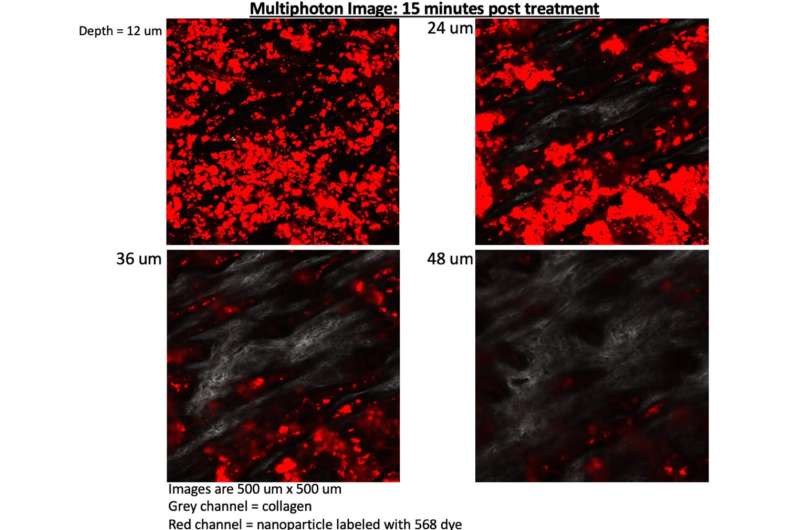This article has been reviewed according to Science X's editorial process and policies. Editors have highlighted the following attributes while ensuring the content's credibility:
fact-checked
trusted source
proofread
'Bliss' compound may hold out hope for autoimmune skin disease

A marijuana-like compound holds out promise as a new treatment for a severe autoimmune skin disease called skin lupus, according to a study published recently by a multicenter team including researchers at the George Washington University.
If the results of the mouse study can be replicated in human trials, the compound, known as anandamide, might one day be used to treat or prevent the painful and disfiguring skin lesions that are characteristic of cutaneous lupus erythematosus, Adam Friedman, professor and Chair of the Department of Dermatology at the GW School of Medicine & Health Sciences, said.
Anandamide is an endocannabinoid that acts on similar receptors activated by THC and CBD, the best known active ingredients in marijuana. Researchers know that the human body produces its own cannabinoids like anandamide and this endogenous compound is thought to help regulate many bodily systems, including the immune system.
Friedman and his colleagues wondered if they could harness the power of anandamide to treat or even prevent skin lupus. Skin lupus is thought to occur when the body's own immune system mistakenly attacks healthy skin, causing rashes and painful sores. Previous research has suggested that systemic lupus, where the immune system attacks its own tissues and organs, may in part be caused by dysregulation of the human endocannabinoid system.
Adam Friedman's interest in research was sparked long ago by his father, Joel Friedman, who is a professor of microbiology, immunology and medicine at the Albert Einstein College of Medicine in New York. For this effort, Adam and Joel Friedman teamed up, along with other scientists, and looked for a way to effectively deliver anandamide through the skin using nanoparticles that slowly release the experimental treatment.
Once they had proven that this platform technology delivered the payload more effectively, the team turned to mice that had been engineered in the labs at Albert Einstein to develop this skin disease as a means of testing the system.
The team first gave the anandamide encased in nanoparticles to mice that were slated to get disease but had yet to develop symptoms. "These animals are engineered to develop skin lupus over time," Adam Friedman said "We found that we could prevent skin lesions from developing at the expected time point."
The team then looked to see if they could treat mice that had already developed symptoms of the disease. They compared mice treated with anandamide encapsulated in nanoparticles to control mice that also received the compound but without the nanoparticle delivery system. After ten weeks, the researchers found that the nanoparticle based treatment reduced the size and severity of the skin sores in mice, more so than anandamide alone.
"If future studies verify these results, the treatment could prove to be a promising therapy for people coping with skin lupus," Adam Friedman said. Doctors turn to steroids and other drugs to treat this disease but they are not designed to treat the underlying pathology, he said. "There is an unmet need for a more effective treatment," Adam Friedman said.
The study, "Nano-encapsulated anandamide reduces inflammatory cytokines in vitro and lesion severity in a murine model of cutaneous lupus erythematosus," was published in the journal Experimental Dermatology.
In addition to Adam and Joel Friedman, Erika T. McCormick, a medical student at the GW School of Medicine & Health Sciences served as the lead author on the paper. Other authors included Chaim Putterman and a team at the Albert Einstein College of Medicine as well as Andrew Draganski at Zylo Therapeutics, the South Carolina company that is developing the nanoparticle technology.
Adam Friedman, Joel Friedman and Andrew Draganski are co-inventors of the anandamide nanoparticle technology.
More information: Erika T. McCormick et al, Nano‐encapsulated anandamide reduces inflammatory cytokines in vitro and lesion severity in a murine model of cutaneous lupus erythematosus, Experimental Dermatology (2023). DOI: 10.1111/exd.14935
Provided by George Washington University



















